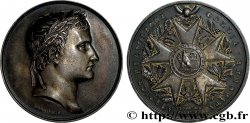v26_1343 - Demi-franc Napoléon empereur, calendrier grégorien, monnaie fourrée avec coins officiels 1806 Paris F.175/1
MONNAIES 26 (2006)
Prezzo di inizio : 400.00 €
Valutazione : 600.00 €
Prezzo realizzato : 455.00 €
Numero di offerte : 2
Offerta maxima : 750.00 €
Prezzo di inizio : 400.00 €
Valutazione : 600.00 €
Prezzo realizzato : 455.00 €
Numero di offerte : 2
Offerta maxima : 750.00 €
Tipo : Demi-franc Napoléon empereur, calendrier grégorien, monnaie fourrée avec coins officiels
Data: 1806
Nome della officina / città: Paris
Quantità coniata : 155989
Metallo : argento
Titolo in millesimi : 900 ‰
Diametro : 18,5 mm
Asse di coniazione : 6 h.
Peso : 2,48 g.
Orlo : pointée et barrée en creux
Grado di rarità : R3
Commenti sullo stato di conservazione:
Monnaie ayant été anciennement nettoyée mais recouverte d’une nouvelle patine aux reflets bleutés. Rayure le long du cou. Sinon exemplaire bien frappé et bien centré à l’usure modérée
N° nelle opere di riferimento :
Diritto
Titolatura diritto : NAPOLEON - EMPEREUR..
Descrittivo diritto : Tête nue de Napoléon Ier à droite ; signé Tiolier au-dessous.
Rovescio
Titolatura rovescio : RÉPUBLIQUE FRANÇAISE./ DEMI/ FRANC./ (MM) 1806. A.
Descrittivo rovescio : dans une couronne formée de deux branches d'olivier.
Commento
Premier exemplaire connu de monnaie fourrée sous l’Empire. La pièce a été contrefaite à partir de coins originaux sans doute volés à la Monnaie de Paris par un de ses ouvriers. Les traces de fourrage se situent, au droit, sur les points les plus hauts du visage et, au revers, sur quelques feuilles de la couronne d’olivier ainsi que sur les lettres des légendes des deux côtés de la pièce. Monnaie exceptionnelle et rarissime.
First known example of a filled coin under the Empire. The coin was counterfeited from original dies, probably stolen from the Paris Mint by one of its workers. The traces of filling are located, on the obverse, on the highest points of the face and, on the reverse, on some leaves of the olive wreath as well as on the letters of the legends on both sides of the coin. Exceptional and extremely rare coin
First known example of a filled coin under the Empire. The coin was counterfeited from original dies, probably stolen from the Paris Mint by one of its workers. The traces of filling are located, on the obverse, on the highest points of the face and, on the reverse, on some leaves of the olive wreath as well as on the letters of the legends on both sides of the coin. Exceptional and extremely rare coin








 Segnalare un errore
Segnalare un errore Stampate la pagina
Stampate la pagina Condividi mia selezione
Condividi mia selezione Fai una domanda
Fai una domanda Consegnare / vendere
Consegnare / vendere
 Descrittivo
Descrittivo









